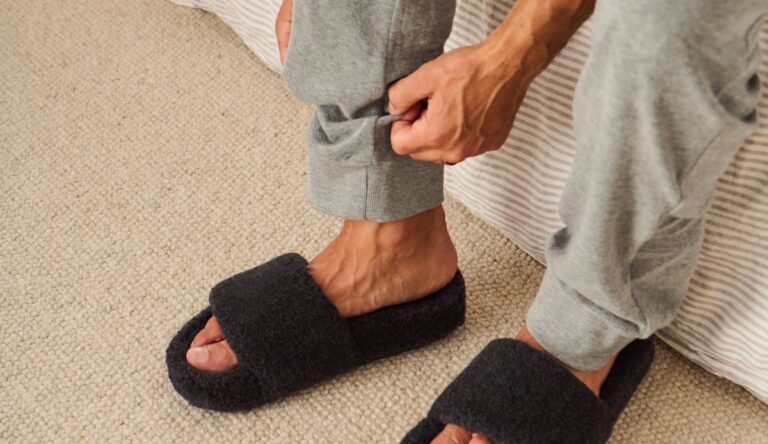
Elegance in Rebellion.
Own the Edge.
Build Bigger Biceps at Home: Simple Routines, DIY Weights, and a 12-Week Plan

A good set of biceps is useful and visual. They help with grip, pulling strength, and they change how shirts sit on your arms. You don’t need a gym membership, fancy plates, or complex machines — you need a plan, consistent progression, and a few practical hacks to scale load at home.
Below you’ll find how the biceps work, why variety matters, bodyweight options that work, safe DIY weights, a full 12-week program you can follow, nutrition and recovery rules, technique cues, troubleshooting, and everything else you need to actually make progress at home.
Why the biceps matter (beyond vanity)
Biceps are used in everyday pulls: lifting grocery bags, hoisting luggage, carrying kids, or grabbing a heavy box. A well-trained arm also improves other lifts (rows, pulls) and reduces injury risk by balancing forearm and elbow strength.
Three muscles make the “biceps package”:
- Biceps brachii (long & short heads) — gives peak and front-of-arm shape.
- Brachialis — underneath; adds thickness and pushes the biceps up.
- Brachioradialis — forearm muscle that helps curls and grip strength.
Training all three makes your arms look complete. Grip, wrist position, and elbow position change which of these muscles get most of the workload, so variety is not optional — it’s essential.
Training principles that matter (no nonsense)
Before routines, lock these principles in:
- Progressive overload — add weight, more reps, better tempo, or extra sets over time. If load or reps don’t increase, you stall.
- Tension and tempo — controlling the eccentric (lowering) phase — 2–4 seconds — drives growth. Don’t swing.
- Volume — for most men, 8–16 direct sets per week for biceps is a solid target; adjust based on recovery and work capacity.
- Compound work counts — chin-ups and rows are powerful biceps builders. Don’t skip them.
- Consistency beats novelty — small steady increases beat sporadic heavy sessions.
Bodyweight and low-equipment moves that actually work
If you have nothing but bodyweight, you can still grow your arms.
Chin-ups — the king of no-equipment biceps work
- Overhand vs. underhand: choose underhand (palms toward you) to bias biceps more.
- Full range: pull chest to bar, control the descent.
- If you can’t do reps yet: do negatives — jump to the top, lower for 3–5 seconds for 5–8 reps.
Inverted rows (underhand grip)
- Use a sturdy table, low bar, or straps. Feet on floor, body straight. Pull chest up.
- Change foot position to change difficulty (further out = harder).
Towel or rope curls (isometrics)
- Loop a towel under a sturdy object, pull up against resistance. Great if you have nothing else.
Band curls / band-assisted chin-ups
- Resistance bands are cheap and effective for progressive tension. Use a band for chin-ups if needed, or anchor your band for curls.
These moves build base strength so DIY weights later provide proper overload.
DIY weights that are safe, progressive, and repeatable
You can make effective, adjustable weights at home. The goal is to choose methods that let you add small increments and maintain safe handles/grip.
Backpack method (most practical)
What you need: a strong backpack and heavy objects (books, rice bags, sand bags, bottles).
How to use:
- Two-handed curl: hold top handle with both hands or use a strap.
- One-arm curl: grab a strap or a single side handle.
Progression: add 1–2 books (1–2 kg) every 7–10 days when you can complete the top of your target reps.
Water/milk jug curls
What you need: plastic jugs (1L–5L).
How to use: hold by handle for curls or hammer curls. Fill partially to adjust weight. Good for unilateral work and tempo training.
Sandbag / rice bag
What you need: heavy-duty bags or duffel with sealed inner bags of sand/rice.
How to use: for curls, farmer carries, or weighted holds. Sand shifts less than water and feels solid.
Bucket + handle
What you need: a bucket with solid handle and filler (water, sand).
How to use: hold handle for hammer curl variations and carry work.
Grip tip: wrap a towel or paracord around thin handles to create a thicker grip and reduce wrist strain.
Safety: don’t swing. Use controlled motion and stop if your lower back or elbow panics.

The 12-week at-home biceps program (detailed)
This program uses 3 workouts per week (two focused on arms and compound pulling, one general full-body day). It’s scalable for beginners and intermediate lifters. Use the same character/feel you like: consistent execution beats fancy moves.
Overall structure
- Weeks 1–4 (Base): Technique, volume, and bodyweight strength.
- Weeks 5–8 (Build): Increase load and intensity.
- Weeks 9–12 (Peak): Heavy work and high-precision hypertrophy.
Frequency: 3 sessions/week (Mon/Wed/Fri or Tue/Thu/Sat).
Warm-up (each session)
- 5–7 minutes light cardio or dynamic warm-up (arm circles, band pull-aparts, wrist mobility).
- 2 sets of light band curls or bodyweight rows for 10–15 reps.
Weeks 1–4 — Base (focus: movement quality + volume)
Workout A (biceps emphasis + compound pull)
- Chin-ups (underhand) — 3 sets to near failure (or negatives 4–6 reps slow)
- Backpack curls — 3 × 10–12 (moderate tempo 2/0/3)
- Hammer curls (water jug) — 3 × 12–15
- Inverted rows (underhand) — 3 × 8–12
Workout B (general upper / accessory)
- Inverted rows (neutral) — 3 × 10–12
- One-arm backpack curls — 3 × 10 each arm
- Band curls — 2 × 15 (fast tempo)
- Farmer holds (bucket) — 2 × 45 seconds (grip training)
Alternate A/B across the week.
Weeks 5–8 — Build (increase load, reduce reps slightly)
Workout A
- Chin-ups: 4 × max (work toward adding reps)
- Heavy backpack curls: 4 × 8–10 (3s down)
- Hammer curls (pause at top 1s): 3 × 10
- Eccentric only negatives (if needed): 2 × 6–8 (5s down)
Workout B
- Inverted rows weighted (pack or band): 4 × 8–10
- Concentration one-arm backpack curls: 3 × 10 each
- Band drop sets: 3 rounds (12 heavy → 12 lighter)
- Grip work: towel holds 3 × 30–45s
Progress by adding weight in backpack, thicker band, or extra reps.
Weeks 9–12 — Peak (mix heavy strength with hypertrophy)
Workout A
- Weighted chin-ups or heavy negatives: 4 × 6–8
- Heavy backpack curls: 4 × 6–8 (heavy, strict)
- Hammer curls (slow negatives): 3 × 8–10
- Burnout band curls: 2 × 20
Workout B
- Mixed-grip rows: 4 × 8
- Concentration curls (strict): 4 × 8–10 each
- 21s (7 bottom half + 7 top half + 7 full): 3 rounds
- Grip finisher: farmer carry 2 × 60s
Progress rule: once you can complete top reps for all sets for two workouts in a row, increase load (more books, heavier jug, more sand).
Rep ranges and tempo — how to program each set
- Strength sets (6–8 reps): heavier load, 2/0/2 tempo (controlled).
- Hypertrophy sets (8–12 reps): moderate load, 2/0/3 tempo (slow eccentric).
- Endurance/higher rep (12–20): lighter load, faster concentric, focus on time under tension.
- Eccentric focus: slow lowering 4–6 seconds for 2–4 sets of 6–8 reps once per week to stimulate growth.
Technique cues (do these every rep)
- Keep elbows pinned to sides — forward elbow drift turns the movement into a shoulder curl.
- No torso momentum — if you’re swinging, drop the load.
- Full supination at the top — rotate the wrist palms-up at the top for full peak contraction.
- Tight wrist — don’t bend the wrist; keep it neutral or slightly supinated.
- Breathe — exhale on the concentric, inhale on the eccentric.
Nutrition and recovery — simple, exact rules
You can’t out-train a poor diet or lack of sleep.
Protein
- Target: 1.6–2.0 g/kg of bodyweight daily.
- Example: 80 kg × 1.6 = 128 g, × 2.0 = 160 g daily.
- Spread protein across 3–4 meals (25–40 g per meal).
Calories
- To gain muscle aim for +200–300 kcal/day above maintenance. Track weight weekly.
- If fat gain becomes excessive reduce to +100 kcal or adjust cardio.
Supplements
- Creatine monohydrate — 5 g/day (helps strength and recovery).
- Whey protein — convenient to hit daily protein target.
- Fish oil and multivitamin if diet is limited.
Sleep & stress
- 7–9 hours nightly. Poor sleep blunts recovery and hormones.
- Use relaxation: 10–15 minutes of low-effort movement or breathing each night.
Sample day (real-life, practical)
Morning
- 2 eggs, oats with protein (25 g protein)
- Coffee, water
Pre-workout (light)
- Banana or toast if training early
Workout — 35–40 minutes (see program)
Post-workout
- Chicken breast or tuna, rice, vegetables (40 g protein)
Evening
- Greek yogurt/ cottage cheese + nuts (20–30 g protein)
- Sleep routine: no screens 30 minutes before bed, 7–8 hours sleep
Troubleshooting — specific problems and fixes
Plateau (no size or strength gains)
- Check progressive overload. If no weight/reps change for 2–3 weeks, increase weekly volume by 10–20% or add eccentric focus sets.
Grip fails before biceps
- Add dedicated grip work (farmer carries, towel holds), or use straps for heavy chin-ups sparingly.
Elbow pain
- Reduce load, add wrist and forearm mobility. Swap to neutral-grip hammer curls and slow eccentrics until pain subsides. Warm up tendons with banded extensions.
Uneven arms
- Start sets with weaker arm and add 1 extra set to it. Use unilateral focus and strict tempo.
No time
- Two 20–25 minute focused upper sessions per week (chin-ups + 3 sets of curls) still produce progress if consistent.
Tools & shopping list (real, cheap, practical)
- Sturdy backpack ($20–40)
- Resistance bands set (light–heavy) — $15–30
- 2–3 water jugs or milk containers (reuse)
- Sand/rice bags (sacks sealed inside duffel) — $10–20
- Cheap pull-up bar or door-frame bar (optional) — $20–40
- Beard-care and grooming tools optional — keep you looking sharp while training
Progress log — copy and use
Create a simple 4-column weekly sheet:
- Date | Exercise | Sets × Reps | Load (books/kg/band level)
Keep it near where you train or in notes app. If you’re not logging, you’re guessing.
Common myths busted
- “You need heavy barbells to build biceps.” No. Progression can be achieved with bodyweight, bands, and DIY loading.
- “More reps = more size.” Not always. You need both heavy (strength) and moderate (hypertrophy) stimuli.
- “Curls alone will give you crazy arms.” Compound pulling matters — chin-ups and rows build the base.
MenVice Quick Guide
| Focus | Action | Example |
|---|---|---|
| Strength base | Chin-ups/negatives 2× weekly | 3 sets to failure or 5 slow negatives |
| Direct growth | Backpack curls 3–4 sets 8–12 | Add 1–2 books when you hit top reps |
| Thickness | Hammer curls 3 × 10–15 | Water jugs or sandbag |
| Tempo | Slow eccentrics (2–4s) | 2 up / 3 down per rep |
| Recovery | 7–9 hrs sleep; 1.6–2g/kg protein | 80kg = 128–160g/day |
| Fixes | If grip fails: farmer holds | If elbow pain: reduce load & pause |
What to do next (straightforward)
Start tonight. Pick your first workout from Weeks 1–4. Load a backpack with a sensible weight (not a struggle), do the warm-up, follow the session, and log everything. Add 1–2 small increments weekly. Track sleep and protein. You’ll see better arms and more practical strength in weeks, not months.






